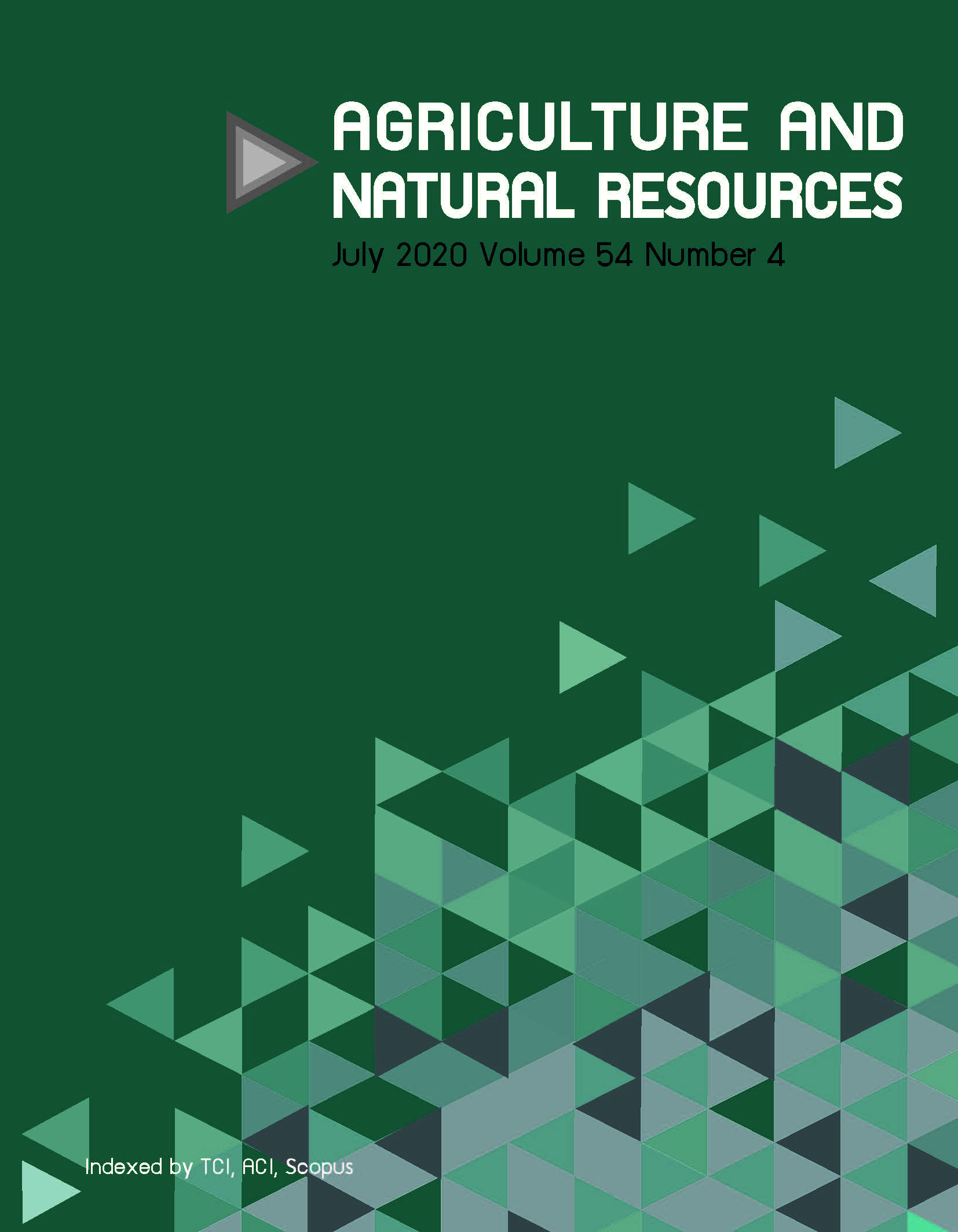Combining ability test of parental lines for three-line hybrid rice breeding
Keywords:
Combining ability, Heterosis, Hybrid rice, Three-line hybrid rice systemAbstract
Information on combining ability and heterosis is important for choosing parental lines in a hybrid rice breeding program. The combining ability of parental lines was evaluated using 4 A-lines and 20 R-lines from different cooking quality groups to select superior genotypes. In total, 40 F1 crosses were planted in the field in a randomized complete block design. The results indicated that the R-lines of KUR8-14-2 (low amylose with aroma) and KUR7-238 (high amylose) had high general combining ability with values of 4.32 and 6.56, respectively. Accordingly, KUA3 of the A-line from the low amylose with aroma group and KUA2 with high amylose had high GCA values of 1.05 and 2.20, respectively. The highest specific combining ability was in crosses between KUA3 and KUR8-11-8 in the low amylose with aroma group and between KUA8 and KUR9-271 in the high amylose group with values of 9.99 and 3.41, respectively. The crosses between KUA3 and KUR8-11-8 in the low amylose with aroma group and between KUA2 and KUR7-238 in the high amylose group showed high standard heterosis (170.25% and 109.33%, respectively) compared to the commercial varieties RD49 (pure line variety) and RDH1 (hybrid variety) with values of 119.46% and 69.88%, respectively. These parental lines can be used to produce future F1 hybrid rice varieties on a commercial scale.
Downloads
Published
How to Cite
Issue
Section
License

This work is licensed under a Creative Commons Attribution-NonCommercial-NoDerivatives 4.0 International License.
online 2452-316X print 2468-1458/Copyright © 2022. This is an open access article under the CC BY-NC-ND license (http://creativecommons.org/licenses/by-nc-nd/4.0/),
production and hosting by Kasetsart University of Research and Development Institute on behalf of Kasetsart University.







